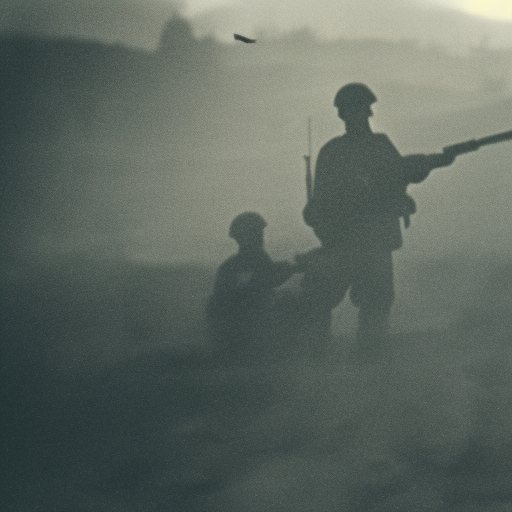The Western Front: A Summary
The Western Front was a significant theater of military operations during World War I, stretching across Belgium and northeastern France. It was the main battleground between the Allied Powers, primarily France, the United Kingdom, and later the United States, and the Central Powers, primarily Germany. The Western Front was characterized by trench warfare, artillery bombardments, and massive casualties.
Causes and Early Stages
The Western Front was established in 1914 after the German invasion of Belgium and the subsequent French and British counteroffensives. The German forces quickly advanced into France but were halted at the First Battle of the Marne in September 1914. Both sides then dug trenches to protect their positions, leading to a stalemate that would last for years.
Trench Warfare and Conditions
Trench warfare dominated the Western Front. The opposing armies dug intricate networks of trenches, separated by a “no man’s land” littered with barbed wire and landmines. Life in the trenches was harsh, with soldiers enduring constant shelling, disease, and unsanitary conditions. The frontlines were often only a few hundred yards apart, leading to frequent raids and skirmishes.
Major Battles
The Western Front witnessed several major battles that resulted in heavy casualties for both sides. The Battle of Verdun, fought between February and December 1916, was one of the bloodiest battles in history, with over 700,000 casualties. The Battle of the Somme, fought from July to November 1916, saw the British and French forces launch a massive offensive against the German lines but resulted in little territorial gain.
Weapons and Tactics
The Western Front saw the introduction of new weapons and tactics. Artillery played a crucial role, with both sides using heavy bombardments to weaken enemy defenses. Poison gas, such as chlorine and mustard gas, was also used, causing widespread suffering and death. Tanks were introduced in 1916, initially with limited success, but later became an important asset in breaking the stalemate.
American Entry and the End of the War
The United States entered World War I in 1917 and began sending troops to the Western Front. The arrival of fresh American forces provided a much-needed morale boost for the Allies. In 1918, the Allies launched a series of offensives, including the Hundred Days Offensive, which pushed the German forces back. The German army eventually collapsed, leading to the signing of the Armistice on November 11, 1918, effectively ending the war.
Legacy
The Western Front left a lasting impact on the countries and individuals involved. The war resulted in the deaths of millions of soldiers and civilians, and the physical and psychological scars endured by those who survived were profound. The Western Front also highlighted the horrors of modern warfare and the need for international cooperation to prevent future conflicts.
In conclusion, the Western Front was a brutal and protracted theater of operations during World War I. Trench warfare, major battles, and the introduction of new weapons defined the conflict. The entry of the United States and the subsequent Allied offensives ultimately led to the collapse of the Central Powers. The legacy of the Western Front serves as a stark reminder of the devastating consequences of war.












